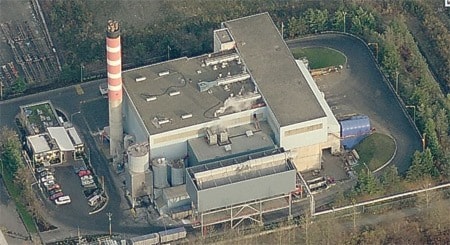by Kevin Mills and Jeff Nagel, Black Press
Metro Vancouver’s proposed waste-to-energy project may end up being privately financed. The regional district is applying to Ottawa for federal funding as a private-public partnership.
The P3 concept is familiar to Abbotsford residents as the city received approval for funding from P3 Canada for a new water supply system at Stave Lake. The proposal was unpopular with the public, which crushed the idea during the last municipal election in November 2011.
Abbotsford Mayor Bruce Banman, who ran on a campaign against the P3 water plan, said he is “cautious and concerned” about Metro’s actions. However, the P3 plan is not his major worry. Instead, it’s the impression that Metro continues to move forward on an incinerator project, even though the Fraser Valley Regional District has major concerns regarding air quality.
Banman said Metro is on an “incinerator bandwagon,” and determined to push ahead with the project.
“They don’t even know what kind of incinerator they have yet, and they’re already going to go to P3. It seems to me as if they’ve already made up their minds what they want to do, and they’re just going to go ahead and do it, regardless of what anybody thinks,” he said.
Banman believes the project needs to be examined carefully and there is “too much up in the air” to make a decision one way or another. He isn’t against all P3 projects, but said when it comes to something as controversial as garbage incineration, much more information is needed. He wants to see what the contract, safeguards and other data look like before any funding is applied for.
“P3 just adds one more serious question that everyone should have. People need to step up and take notice of what’s going on.”
He is hoping Metro will look at other waste disposal options, rather than incineration, or at least examine placing the facility out of region.
“I think to put the risk of the crop production, the risk of the health of people downstream, downwind from them, just to save a couple measly bucks on tipping fees, well, I’m not liking that idea.”
Metro Vancouver still must carry out extensive studies and consultation with the FVRD. It has yet to decide where a new waste-to-energy plant might be built, and whether it uses conventional incineration or some alternative technology.
The region downsized the plan earlier this year, estimating it now needs extra disposal capacity of 250,000 to 400,000 tonnes per year – down from 500,000 to 600,000 – in light of declining garbage volumes.
Abbotsford Coun. Patricia Ross, who is also vice-chair of the FVRD, said the two districts are still at the beginning stage of consultation.
“Our staffs are looking at what we want to see in terms of consultation. They are just setting all that out. They’re starting off with where do we agree and building from there,” she explained.
Ross said it’s “frustrating” to keep fighting these air quality issues from sources “outside our borders, who don’t have to experience the consequences of their decisions.”
She called the P3 application premature, noting Metro appears to be “barreling ahead.”
Ross believes Metro may soon discover that P3 Canada may not be the prudent or popular choice.
“To me they are attracting even more controversy to an already highly controversial project.”
She also said the P3 model will be more costly, meaning if Abbotsford remains a client of Metro, tipping costs are sure to rise.
“It isn’t just an environmental and health issue. It’s a financial one.”
The application for P3 Canada funding has also split directors on the Metro regional board, with some warning that building a new incinerator as a P3 could dramatically drive up the costs for taxpayers.
Delta Mayor Lois Jackson said the situation is reminiscent of the Canada Line, where private investors borrowed the money to build the $2-billion rapid transit line at much higher interest rates than if it had been publicly financed. She noted the region gets favourable interest rates through its membership in the Municipal Finance Authority.
“I have no problem with doing a P3 for design-build,” Jackson said. “But finance, I think, is not a wise choice. All that money and interest has to be paid back and the taxpayer ends up paying back a higher rate of interest.”
P3 Canada-eligible projects must give the private partner not just a design-build role, but also one of either operating, maintaining or financing it.
Metro’s application proposes a design-build-finance-operate P3, because projects with the most private sector involvement are expected to be preferred for funding.
Board vice-chair Richard Walton supported the decision, saying Metro won’t yet be bound to that model and could revise it later.
Metro staff and consultants are still determining a recommended business model for the new plant ahead of a call for proposals from potential partners.
But Walton said the region had to apply by June 15 to have a shot at a grant.
“My view is you keep all those doors open going forward,” he said.
The P3 Canada fund is to distribute more than $525 million by the end of 2013, with grants limited to 25 per cent of a project’s capital cost.
Metro’s current waste-to-energy plant in Burnaby was developed as a design-build-operate P3, with the region financing it and retaining ownership.
